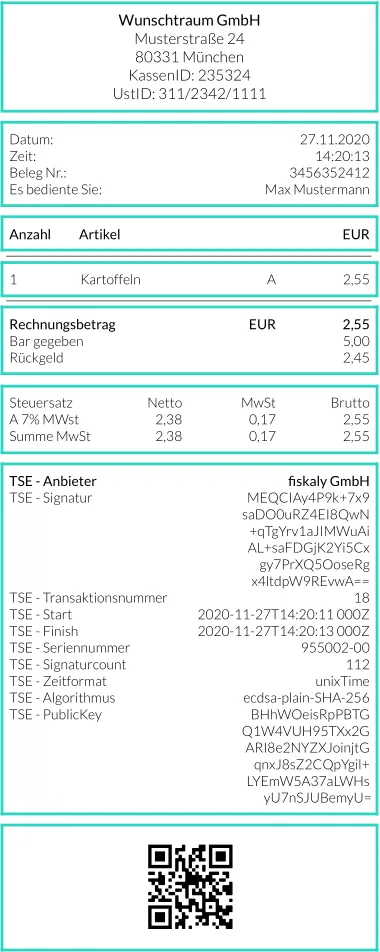DSFinV‑K: The data standard for POS explained in detail.
In June 2020, version 2.2 of the DSFinV-K was published. Here we explain the most important points of the Digitale Schnittstelle der Finanzverwaltung für Kassensysteme (DSFinV-K) in detail.
The 3 areas of DSFINV‑K
The DSFinV‑K is divided into the following areas:
- Single recording module
- Master data module
- Cash register closing module
The master data must be recorded for each cash statement in order to avoid inappropriate and poor data management. Therefore a temporal data retention of the master data is not necessary. Before master data can be changed, a cash balance must be created so that the master data can be clearly assigned to the respective cash balance.
Here we explain the three modules of the DSFinV‑K in detail:
1. The single recording module
The data storage is based on the individual records, which are divided into two essential areas:
- Receiptpos(itions)
- Receipt Header

Receiptpos:
These contain the individual items of a business transaction with the correct VAT rate, quantity and type of items delivered. In addition, the calculation method of the reportable VAT rate must be clearly presented (gross or net).
- Receiptpos_VAT: Each item must be assigned a VAT rate
- Receiptpos_Pricing: Here you can find detailed information on the origin of the price, for example Discount or surcharge
- Receiptpos_ Additional info: serves to explain products sold (e.g.: menu drink and lunch) but can also differ (e.g.: schnitzel with rice instead of with potatoes)
Receipt Header:
The receipt header normally consists of all individual items. Additionally there are the following files:
- File Receipt_References: This file can refer to processes within the DSFinV‑K as well as to external systems.
- File TSS_Transactions: Here the transactions of the data are to be stored. This data is required for verifying secured protocol data without TSS export and for checking the validity of the TSS certificates used at the time of logging.
2. The master data module
The master data for each cash balance is stored only once. If changes are made to the master data, a financial statement must first be created. Master data includes the data of the cash register closing:
- Date and time
- Start and end ID
- Company information incl. Tax no. or VAT no. and ID no.
- File: Root_places Names and locations of the operating sites with cash registers.
3. The cash register closing module
This module takes over a booking voucher function, so that the data of the respective cash statement is also stored digitally.
File: GV_Typ
File: Zahlamt
File: Waehrungen
Further information about the DSFinV‑K can be found on the website of the Federal Central Tax Office and here on the KassenSichV-Blog.